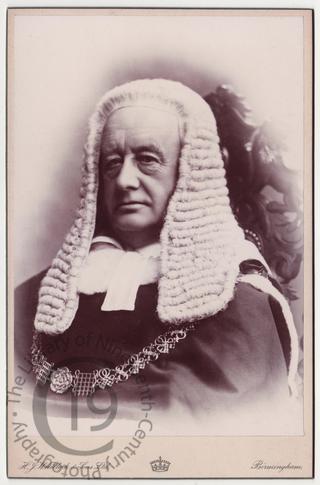
Richard Everard Webster, later Lord Alverstoke
A cabinet card portrait of British barrister, politician and judge Richard Everard Webster (1842-1915), who served in many high political and judicial offices. In 1900 he was created Baron Alverstone, of Alverstone in the County of Southampton, and in 1913 he was raised in the peerage from Baron to Viscount.
Webster was educated at Charterhouse and at Trinity College, Cambridge. was called to the bar in 1868, and became QC only ten years afterwards. His practice was chiefly in commercial, railway and patent cases until (June 1885) he was appointed Attorney-General in the Conservative Government in the exceptional circumstances of never having been Solicitor-general, and not at the time occupying a seat in parliament. He was elected for Launceston in the following month, and in November exchanged this seat for the Isle of Wight, which he continued to represent until his elevation to the House of Lords.
In 1890 he was leading counsel for The Times in the Parnell inquiry; in 1893 he represented Great Britain in the Bering Sea arbitration; in 1898 he discharged the same function in the matter of the boundary between British Guiana and Venezuela. During the Alaska boundary dispute of 1903 he was one of the members of the Boundary Commission. It was his swing vote that settled the matter, roughly splitting the disputed territory. As a result, he became extremely unpopular in Canada.
In 1900 he succeeded Sir Nathaniel Lindley as Master of the Rolls and in October of the same year he was elevated to the office of Lord Chief Justice upon the death of Lord Russell of Killowen. He presided over some notable trials of the era including that of Hawley Harvey Crippen. Although popular, he was not considered an outstanding judge.
Lord Alverstone died at Cranleigh in Surrey on 15 December 1915, aged 72.
Photographed by H.J. Whitlock of Birmingham.
Code: 125730




